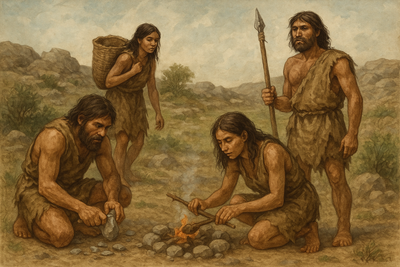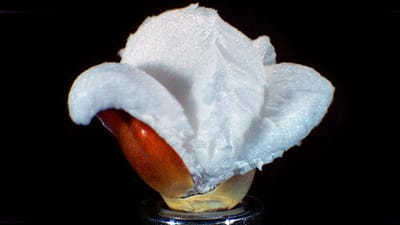TWIL #07: From Beans to 100 Million year old Coastlines

From ancient beans to modern brews
Coffee bean prices are surging globally, a trend driven by extreme weather and economic shifts that are shaking up the industry. Recent reports note a dramatic 103% increase in coffee prices, sending shockwaves through markets from Brazil to Australia…. but more importantly it’s sending shockwaves through my bank account every time I order new bags of my favourite beans (prizes have moved from €33 to €49 per kg!).
At the same time it triggered me to dive into the history of coffee once again:
Coffee’s history traces back to the ancient coffee forests of Ethiopia. Legend tells of a goat herder named Kaldi who discovered the energizing effects of coffee beans when he noticed his goats becoming lively after eating them. This discovery led to the cultivation of coffee in the Arabian Peninsula, with the first known coffeehouses appearing in Mecca during the 15th century.
Equally intriguing is the story surrounding how the secret of coffee spread beyond Arab borders. Determined to break the Arab monopoly on this prized bean, daring European traders embarked on covert missions to secure it. One popular narrative recounts that Dutch merchants, eyeing the burgeoning demand in Europe, smuggled coffee beans hidden among shipments of spices and other exotic goods. This clever, and some might say audacious, act of subterfuge allowed them to transplant the art of coffee cultivation to the Dutch East Indies, setting in motion a global coffee revolution.
By the 17th century, coffee had spread across Europe, becoming a staple beverage and a catalyst for social interaction.

Navigating dilemmas: how the Moral Machine drives AI ethics
This week, I had a discussion with a friend about a project he’s working on: an interactive approach to help people understand and engage with ethical dilemmas. Intrigued by the question, I dove into the world of dilemma’s and thus came across the Moral Machine by MIT, a project designed to illustrate how decision making is approached in the realm of AI cars. This tool offers a simple way to visualize and grapple with the challenges of programming ethical choices into autonomous vehicles, making abstract dilemmas feel both tangible and urgent

.The Moral Machine project challenges users to think critically about their values by placing them in simulated, real-world scenarios, ultimately encouraging deeper reflection on how we make moral decisions. In a world where ethics increasingly intersect with technology, especially as AI continues to evolve in areas like self-driving cars, how might interactive experiences like these reshape our understanding of right and wrong?
And is there always a right and wrong?
How a coastline 100 million years ago influences modern election results in Alabama

This week I came across this image on Instagram: "How a coastline 100 million years ago influences modern election results in Alabama." Intrigued by such a bold claim, I dove deeper into the context...
Over 100 million years ago, during the Cretaceous period, a shallow sea washed over what is now Alabama’s Black Belt, leaving behind nutrient-rich sediments that would later create some of the region’s most fertile farmland. This ancient coastline set the stage for a dramatic chapter in human history.
Many, many, many years later, it were these rich soils that made the area an ideal backdrop for vast cotton plantations, a setting that tragically nurtured the brutal system of slavery.
After emancipation, many freed slaves remained in these communities. Over time, they built strong, close-knit societies that held onto their cultural traditions. Even though the South generally leans Republican, these communities have often voted Democratic and, every now and then, even managed to swing local elections in their favour. This unexpected political twist shows how deep historical roots continue to influence modern voting patterns.
It’s fascinating to see how the legacy of an ancient sea has, indirectly, influenced settlement patterns, agricultural practices, and ultimately the modern electoral map.
This unexpected connection reminds me that our present is often the result of mysteries buried in our distant past; inviting us to look closer and ask more questions about the intricate interplay between nature and history.
What else?
- Pykrete - the super material: During World War II, British scientists experimented with a material called Pykrete; a mix of wood pulp and ice. It was surprisingly strong and melted slowly, leading to wild ideas like building massive, ice-based aircraft carriers.
- Volcanic lightning - When volcanoes erupt, they don’t just spew lava and ash… they can also create lightning. The collision of charged ash particles in the turbulent volcanic plume generates brilliant flashes.





